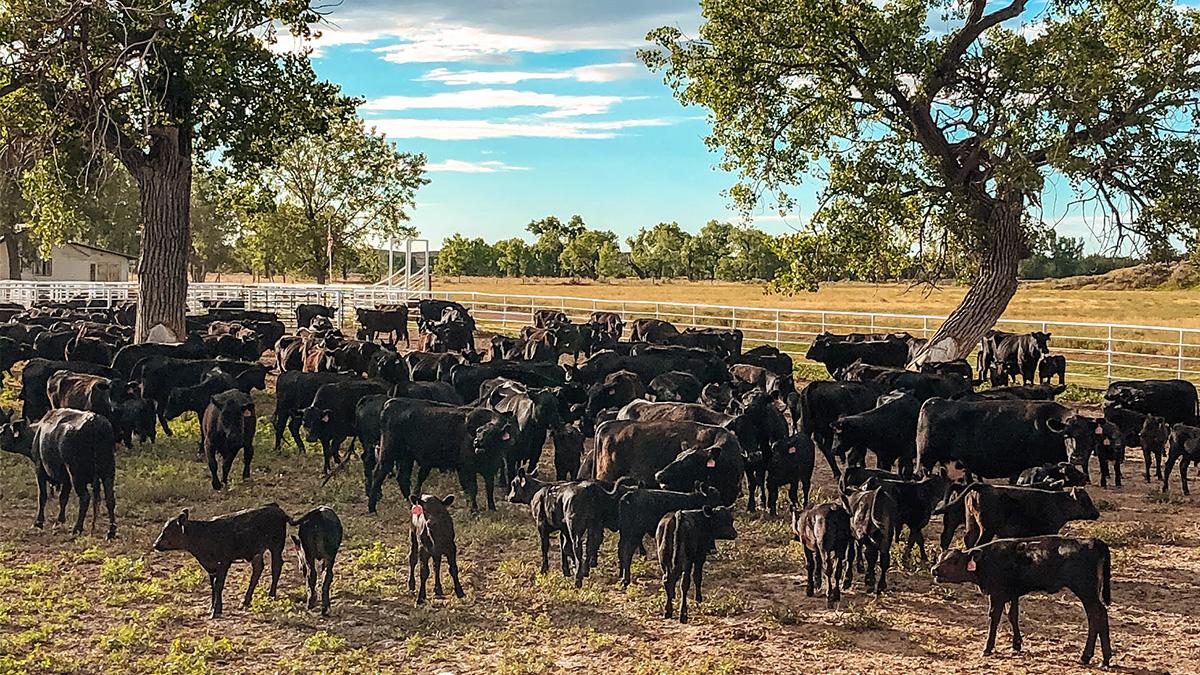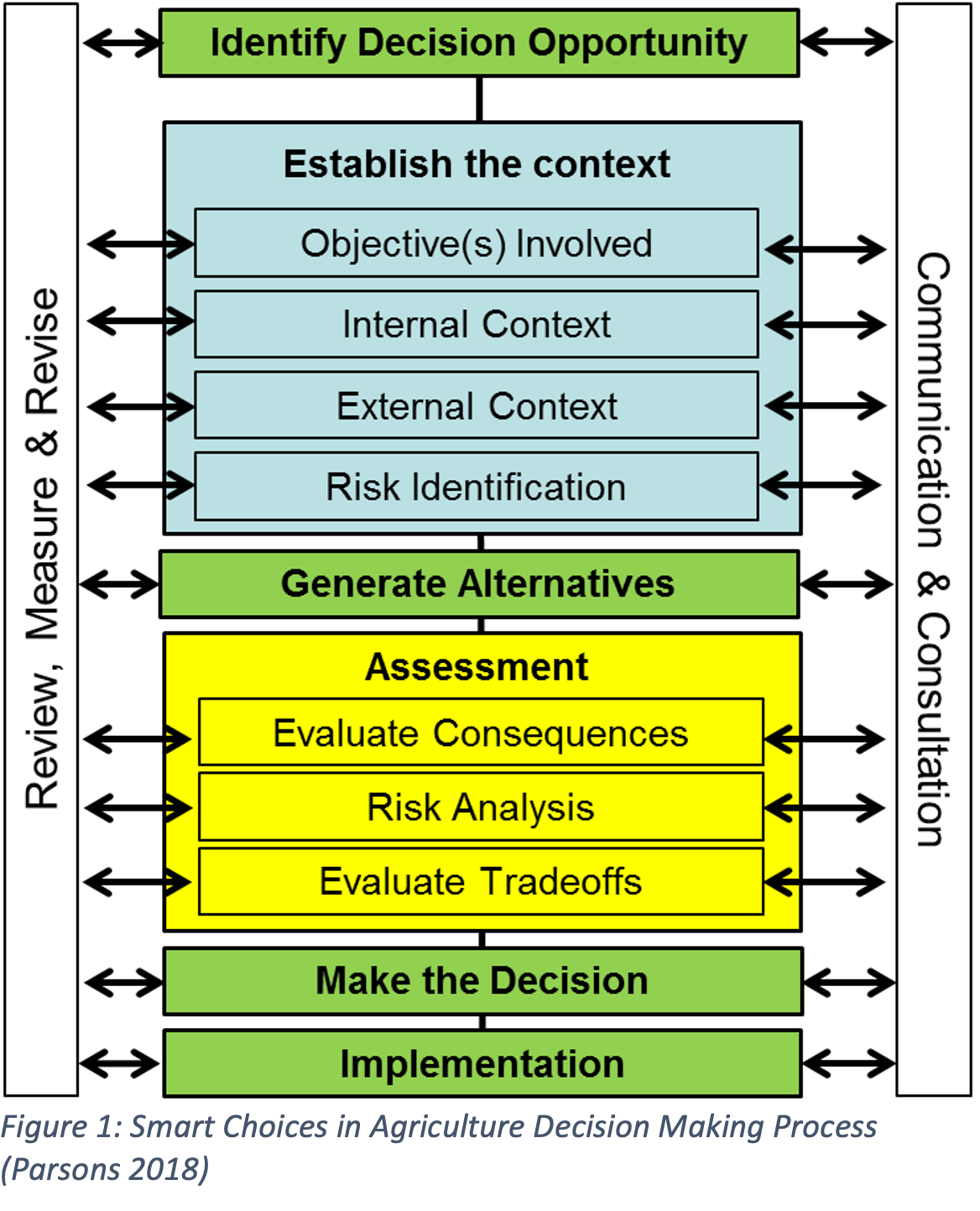Cinnamon Lenhart/realagstock
This article was first published by RightRisk News in September 2022.
Making decisions in agriculture is difficult even in relatively stable conditions. The uncertainty we have experienced the last three years appears to be persisting for a while longer, making it a good time to focus on building our decision-making skills under uncertainty. Uncertainty makes decisions harder to make but can also represent an opportunity to build a competitive advantage for your operation using good decision-making principles. A decision maker willing to step out ahead of the farm economy and take an informed risk, within the confines of their situation, may be rewarded with future opportunities.
The illusion that we can create a known or certain future is just that, an illusion. There will always be parts of the future that are uncertain. Risk is created when that uncertainty matters, and uncertainty matters when it effects what you are trying to achieve. Good decision-making begins with knowing what you are trying to achieve by making a decision, building an understanding of the context in which you are making it, and proceeding to create some great alternatives from which to choose.
Smart Choices
Smart Choices in Agriculture (Parsons 2018) is a decision-making process that provides agricultural producers with a foundation for more consistently making good decisions in challenging environments. It focuses on establishing the context in which you are making the decision(s), an often overlooked step. The context includes an understanding of the objectives you are trying to achieve, the internal and external conditions in which you are making the decision(s), and the identification of the risks and uncertainties involved (Figure 1).
The process is supported by communication and consultation inside and outside the farm or ranch operation to provide the best information for making decisions and a complementary willingness to review, measure, and revise all aspects of decisions with this updated information. For example, a cow-calf producer may feel overwhelmed grappling with drought conditions, a lack of forage resources, high feed costs, high cattle markets, declining cattle inventories, difficulty finding good employees, high land values, rising interest rates, climate and environmental issues. However, recognizing how important it is to keep the operation in the family and functioning profitably can provide the motivation needed to move forward with a focus on accomplishing key objectives.
Five Key Principles
The Smart Choices in Agriculture (SCA) decision-making process is designed to promote five key principles of a good risk management culture: (1) the ability to anticipate decisions; (2) adequate resources and the capacity to respond to changing conditions; (3) a free flow of information into and throughout the organization; (4) a willingness to learn and adapt; and, (5) risk management is embedded in all decision making processes (Parsons 2022).
These five key principles should be thought of as interacting with one another rather than being distinct from one another. For example, a free flow of information into and throughout the organization creates awareness which, in turn, enhances the ability to anticipate decisions. For example, an employee operating a tractor in a field may notice an adjacent pasture is under stress from the impacts of drought and grazing pressure. In a good risk management culture, even though this employee may have little to do with the cattle enterprise on the operation, this information would flow quickly to the appropriate decision-makers. This flow of information would enhance their ability to anticipate possible future decisions to move the cattle off the pasture, procure or activate other feed resources to respond to these changing conditions, and otherwise learn and adapt to this new situation.
Sources of Risk
Most decision makers agree there are five main sources of risk in agriculture: market risk, production risk, institutional risk, human risk, and financial risk. The uncertainty we are currently experiencing reaches into each of these areas in significant ways. We are familiar with variability in prices and yields within historical ranges. However, at this time we are witnessing unprecedented events, domestic and international, combining to push outcomes into increasingly uncertain territory we do not normally manage. This makes it even more important to gather and use good information to establish a solid understanding of what you are dealing with, as well as the outcomes you are trying to achieve.
The choice you make can never be better than the best of the alternatives you have to choose from and you can never choose an alternative you haven’t considered. Creating alternatives to choose from becomes a much easier task with a solid understanding of the context in which you are making the decision; this requires good information and a willingness to learn and adapt.
Making a Choice
Decisions often begin with a perceived choice between two alternatives. Frequently, neither alternative is the best choice. A decision-maker can often iterate original alternatives into better alternatives or perhaps create fantastic new alternatives that were previously unrecognized by thinking creatively with good information in hand.
The most difficult challenge in making decisions under uncertainty is grappling with trade-offs involving multiple objectives with little factual information. There are very few things about the future we can describe as facts. At best, most factual information describes only the present and the past. Decisions are about the future. The future is full of uncertainties at present. However, difficult discussions about the future, while evaluating trade-offs between alternatives is an important aspect of using sound reasoning to select the best choice. Sound reasoning and weighing trade-offs also extends to consideration of downstream decisions. A decision made today usually impacts future decision opportunities and available choices. Your reasoning is sound if evaluating each alternative extends to achieving the objective of maximizing future opportunities to make good decisions.
Current conditions are challenging managers across several dimensions. Decision-makers with the courage to embrace uncertainty as an opportunity to use good decision making principles and to build a competitive advantage may look back on these times as positive period of growth in their farm or ranch operation.
Works Cited
Parsons, Jay. 2022. "Five Key Principles of a Good Risk Management Culture." CAP Series 22-0801, August 2. https://cap.unl.edu/management/five-key-principles-good-risk-management-culture.
—. 2018. "Smart Choices in Agriculture." Cornhusker Economics, May 2: 1-3. https://agecon.unl.edu/cornhusker-economics/2018/smart-choices-agriculture.
Jay Parsons, University of Nebraska-Lincoln
John Hewlett, University of Wyoming
Jeff Tranel, Colorado State University

